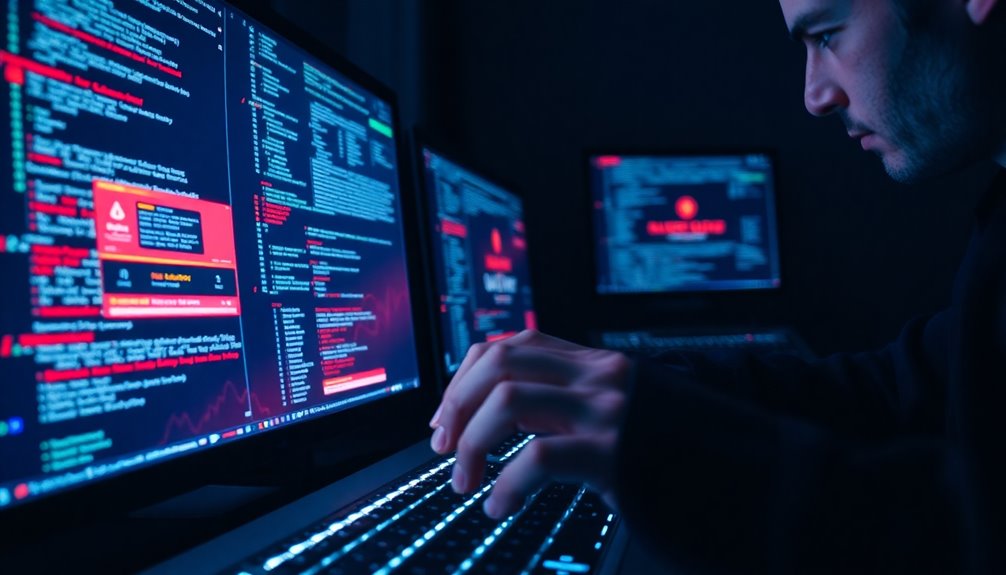
As cybersecurity threats continue to evolve, organizations are increasingly alarmed by the rising risks, particularly from phishing, smishing, and AI-powered attacks. You're likely aware that 83% of security professionals view these tactics as major threats. Given how phishing often serves as a gateway to more severe issues like malware and ransomware, with 71% of professionals identifying these as significant risks, it's clear that vigilance is essential.
These threats don't just come from external sources; social engineering attacks affect about 60% of respondents, and as AI capabilities grow, the potential for such attacks increases. Natural Language Processing can be utilized to enhance defenses against these threats, providing organizations with better tools to analyze and respond to phishing attempts. Accidental data loss is another pressing concern, with 58% of respondents expressing worry about unintended data leakage. You might be surprised to learn that even as technology evolves, the challenges associated with it do too.
Social engineering attacks impact 60% of organizations, while accidental data loss concerns 58%, highlighting evolving challenges in cybersecurity.
The concern about AI and other emerging technologies rose by 15% from 2024, indicating a need for organizations to stay ahead of the curve. With such high stakes, identifying security gaps has become a crucial focus for 77% of security professionals. Improving security culture is also on the agenda for 75% of organizations, which recognizes that awareness is key in combating these digital threats. Additionally, planned cyber security initiatives highlight the proactive measures organizations are taking to address these vulnerabilities.
Limiting outsider threats remains a priority for 73% of professionals, particularly against phishing and malware. Many organizations are choosing to outsource services like penetration testing and email security to bolster their defenses. Compliance with regulations like GDPR and HIPAA continues to be a top priority, reflecting the need to safeguard sensitive information while meeting legal requirements.
AI-powered attacks are on the rise, posing unique challenges in social engineering and phishing. You should be aware that AI can also create sophisticated threats, such as voice and video phishing. With the increasing sophistication of adversarial attacks, protecting AI models and data becomes paramount. Insider threats are expected to grow as well, highlighting the importance of a unified zero-trust framework to safeguard against these risks.
As organizations navigate a maze of regulatory challenges, the lack of harmonization could weaken cybersecurity defenses. They might find themselves bogged down by compliance overload, focusing more on meeting standards than on genuine risk reduction. As you can see, addressing these vulnerabilities requires a proactive approach, balancing compliance with innovation.
Preparing for future risks, including those posed by quantum computing, is essential for long-term security. In this ever-changing landscape, remaining vigilant and adaptable is crucial for you and your organization's cybersecurity efforts.








